Hollywood is squaring off against Silicon Valley in the battle over SB 1047, California’s first-of-its-kind AI safety bill. Amid doubts about whether Governor Gavin Newsom will sign the legislation, a wave of star-studded endorsements mark the first organized celebrity effort to advance AI regulations beyond the direct interests of the entertainment industry.
Technology
Hollywood is coming out in force for California’s AI safety bill
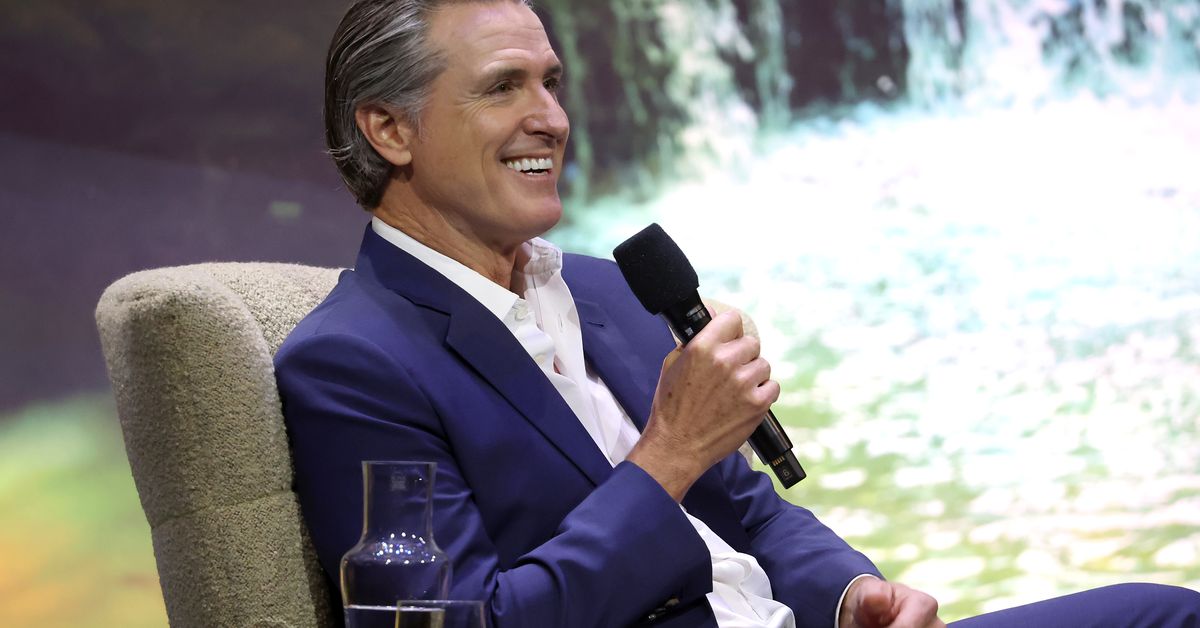
On Tuesday, over 125 big Hollywood names published an open letter urging Newsom to sign the AI safety bill. Signatures include Ava DuVernay, Jane Fonda, J.J. Abrams, Shonda Rhimes, Alec Baldwin, Pedro Pascal, Jessica Chastain, Adam McKay, and Ron Perlman. “We fully believe in the dazzling potential of AI to be used for good. But we must also be realistic about the risks,” the letter reads. In a sign of genuine enthusiasm, the letter was written by one of the signatories, according to a person in contact with the celebrities.
SB 1047 is the US’s most significant AI safety legislation to date, and Newsom’s signature would break the precedent of letting the industry police the development and deployment of its most powerful models via voluntary commitments. The core of the bill mandates that the largest AI developers implement safeguards of their own choosing to reduce the chance their model causes or enables a disaster, like a severe cyberattack or pandemic. It would apply to any covered AI company doing business in California, which is home to the top five generative AI companies and the world’s fifth-largest economy. This makes it a de facto national regulation in a country that has trailed the EU, China, and the UK in efforts to regulate AI.
The bill passed California’s legislature in August, and Newsom has until September 30th to sign or veto it. So far, it’s not clear what he’ll do. The governor made his first direct comments about SB 1047 in an interview with billionaire Salesforce founder Marc Benioff last week. While he told the Los Angeles Times he had not made a final decision right before the interview, he suggested to Benioff he had reservations about the bill’s potential impact on the state’s competitiveness.
It wasn’t initially clear how much SAG-AFTRA would go to bat for SB 1047
At the same time, Newsom recently signed two AI bills that directly appeal to SAG-AFTRA at its Los Angeles headquarters, flanked by leaders of the powerful union of screen actors and performers. The labor group was a driving force behind the bills, which regulate the use of digital replicas and build on concessions won in the 2023 actors strike. The union is also one of the most prominent supporters of SB 1047.
The celebrity letter signatories, many of whom are SAG-AFTRA members, write that they are “genuinely grateful” for Newsom’s signature on the two digital replica bills. But the AI safety bill, they write, “is not about protecting artists — it’s about protecting everyone.”
SB 1047 has rallied both support and intense criticism. It’s opposed by most of the AI industry, former House Speaker Nancy Pelosi, San Francisco Mayor London Breed, and eight congressional Democrats from California. Powerful supporters include the Service Employees International Union (SEIU), the Latino Community Foundation, Elon Musk, and — in a letter first reported by The Verge — SAG-AFTRA.
Newsom’s decision may come down to raw power politics — something each side recognizes as they muster support in the bill’s final days. As he contemplates his political future, the governor faces a difficult choice between the two industries his state is best known for: tech and entertainment.
It wasn’t initially clear how much SAG-AFTRA would go to bat for SB 1047. Performing artists have been directly impacted by the precipitous rise of generative AI, from nonconsensual deepfake pornography of celebrities like Taylor Swift to the threat of digital replicas killing acting jobs. In an earlier flashpoint between Hollywood and the AI industry, OpenAI was accused of ripping off Scarlett Johansson’s voice for use in ChatGPT. But unlike the two bills Newsom signed, SB 1047 doesn’t directly address these issues. It’s aimed at far more catastrophic threats.
As the deadline approaches, however, the union’s support is shaping up to be much more than a marriage of convenience with other supporters of big tech regulation. Tuesday’s letter includes SAG-AFTRA leaders like president Fran Drescher, national executive director and chief negotiator Duncan Crabtree-Ireland, secretary-treasurer Joely Fisher, and 12 national board members, including Sean Astin and Rosie O’Donnell.
“We’re the canaries in the coal mine”
Fisher told The Verge that in addition to the protections Newsom signed into law, “our community also cares deeply about safe and responsible AI development, so many of us have come together to urge the Governor to sign this one for humanity and his legacy. Putting guardrails on Big Tech won’t stifle innovation.”
On Tuesday afternoon, Astin published a detailed personal letter he just sent to Newsom, writing that SB 1047 is still required “because it is the only bill that seeks to regulate the largest of the large language models and computer clusters used by giant tech companies.” The Lord of the Rings star also mentions his recently earned master’s degree in public administration.
Prior to Tuesday’s letter, at least 11 SAG-AFTRA members posted on social media in support of SB 1047. Stars like Joseph Gordon-Levitt, Mark Ruffalo, Alyssa Milano, Astin, and Piper Perabo published videos and posts urging Newsom to sign the bill.
Comedian Adam Conover said in his video, “I’m a big critic of AI and a lot of what you hear about the robot uprising is fluff and BS and marketing, but the billionaires who run this industry really are causing real risks they are not doing enough to prevent.”
SAG-AFTRA board member Jason Winston George, a TV star on Grey’s Anatomy, told The Verge that he’s “a huge Gavin Newsom fan” and is “incredibly thankful” the governor signed two union-backed bills. But he doesn’t want Newsom to stop there. George is all in on SB 1047, too.
George brought up Christopher Nolan’s Oppenheimer, which won Best Picture for its portrayal of the “father of the atomic bomb,” likening the anguished physicist to Geoffrey Hinton, the pioneer of deep learning who famously resigned from Google to speak freely about the risks of the technology he shaped. Hinton, the most cited living scientist, has also written in favor of SB 1047.
With the 2023 actors strike, SAG-AFTRA has been at the forefront of efforts to regulate AI in the US. The use of AI tools in Hollywood was perhaps the biggest obstacle to resolving the 118-day actors strike. “We’re the canaries in the coal mine, and we became very acutely aware of how much [AI] is going to change everything, and so I think that’s why our membership is so vocal,” said George, who was part of the union’s negotiating team. “I’m not afraid of AI, I just want to make sure that there are guardrails on it,” he added.
The celebrity support for SB 1047 is another sign of the growing rift between elites in Hollywood and Silicon Valley. A number of high-profile tech billionaires have recently pivoted to the right, whereas the biggest stars have remained solidly blue and endorsed Kamala Harris.
The union is no stranger to using legislation to advance its interests. It currently lists 18 federal and state AI bills besides SB 1047 on the group’s 2024 legislation tracker, primarily covering entertainment-related concerns like AI replicas, deepfakes, and copyright protection. But its support for SB 1047 marks the first time the group has thrown its weight behind an AI bill not directly related to its industry.
Will it make a difference? Nobody seems sure. But Tuesday’s letter includes some of the governor’s most well-known allies.
Hollywood came out in force to back Newsom in his 2021 recall race. And now, some of those prominent supporters have signed on to the SB 1047 letter, like Mark Hamill, Alyssa Milano, Shonda Rhimes, and J.J. Abrams, who donated $32,400 to Newsom’s 2022 campaign. Additionally, Jane Fonda fought oil drilling with Newsom, and Ava DuVernay was inducted by the governor into the California Hall of Fame in 2022.
In 2024, California passed more than 40 AI bills addressing things like self-driving trucks, election misinformation, and AI-generated child pornography. However, none of the other AI bills on Newsom’s desk have provoked as much industry pushback as SB 1047.
“This is a space where we dominate and I want to maintain our dominance”
The governor has been willing to stand up to powerful industries before, like fossil fuels and fast food, but he hasn’t shown that same backbone with big tech. In August, Newsom orchestrated a backroom deal to kill proposals to fund local journalism through taxes on tech platforms like Google and Meta. Instead, Google and California will each contribute money to fund local journalism and an AI accelerator. Leaders of multiple journalist unions called the agreement “disastrous.” (One of the proposals, which was also backed by SAG-AFTRA, did face some good-faith criticism for how it planned to raise and distribute funds.)
At Dreamforce, Newsom spoke at length about SB 1047. While he said he felt a “deep sense of responsibility to address some of those more extreme concerns that I think many of us have,” he seemed to be leaning toward a veto. Newsom worried about the “outsized impact” and “chilling effect, particularly in the open source community” he thinks the bill could have.
“This is a space where we dominate and I want to maintain our dominance,” he said. “What are demonstrable risks in AI and what are the hypothetical risks? I can’t solve for everything — what can we solve for?”
The person in touch with celebrity supporters, who wished to remain anonymous due to the controversy around the bill, told The Verge that some feel “Newsom has played them” by signing the AI replica bills to great fanfare. Some of them “think it was intentional misdirection to make people think that he had signed all the AI bills that they care about, and then, in fact, veto what I’ve heard referred to several times as the ‘big one,’” the person said. “I think that these are very, very smart people. Many of them have read the bill all the way through, have developed opinions on specific sections and provisions in the bill.”
They emphasized that not everyone felt this way, however, and that many “have faith that [Newsom will] do the right thing.”
The Hollywood letter warns that AI’s risks won’t stay hypothetical for long. “Grave threats from AI used to be the stuff of science fiction, but not anymore,” it says. It cites an open letter supporting SB 1047 signed by over 110 current and former employees of top AI companies, who write, “We believe that the most powerful AI models may soon pose severe risks, such as expanded access to biological weapons and cyberattacks on critical infrastructure.”
Its signatories paint SB 1047 as a struggle against a powerful, reckless, and loosely regulated industry. “Advanced artificial intelligence is being deployed by massive for-profit tech companies with very little government oversight,” says signatory Adam McKay. “I’m calling on Governor Newsom to demonstrate that he represents the public interest and won’t cave to Big Tech.”
The Hollywood letter makes a personal appeal. “We are your supporters. We voted for you,” it says. “We want to continue to believe that you are a leader who will stand up for everyone’s wellbeing, not just for a few Silicon Valley giants.”
In this high-stakes drama between Hollywood and Silicon Valley, the final act belongs to Governor Newsom.
Technology
Fierce new Monster Hunter Wilds trailer reveals release date
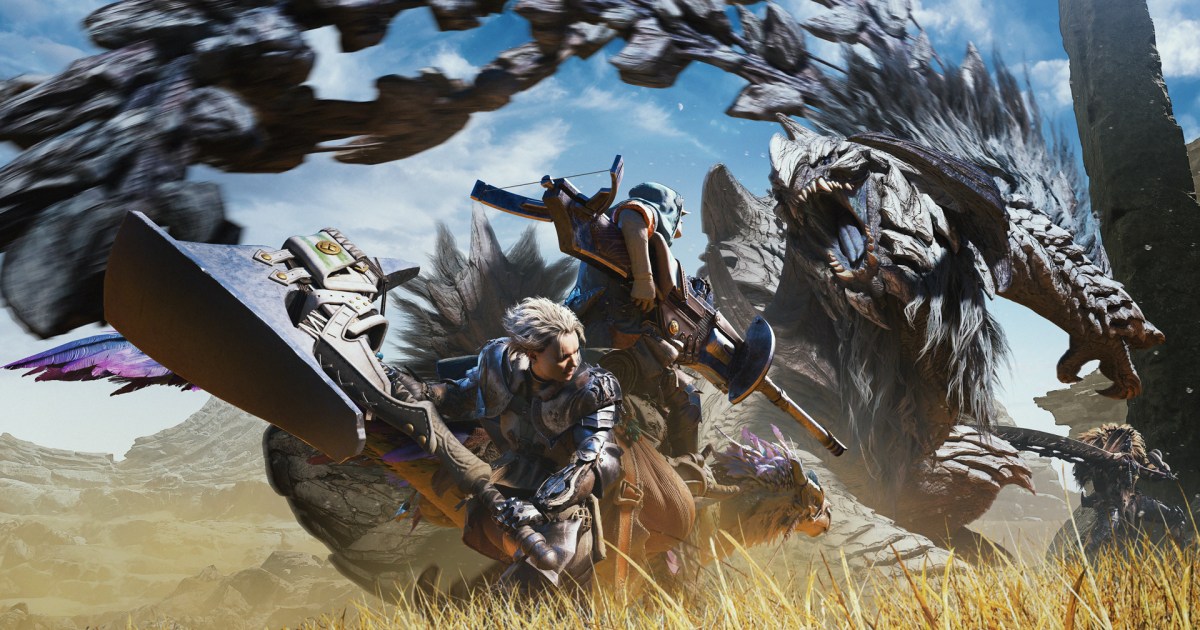

Capcom has treated us to another long look at Monster Hunter Wilds, including that all-important release date. The hunt is on beginning February 28, 2025, on PlayStation 5, Xbox Series X/S, and PC.
The latest trailer for the next entry in the massively popular Monster Hunter franchise showed off a more personal side to the story, opening with a child fleeing the wrath of the White Wraith and introducing us to many of the characters we can look forward to bonding with while slaying giant beasts. The adorable Palicos are back in full force, helping with cooking and on the battlefield as they have in prior games. In one instance a hunter was knocked out and saved by a Palico dropping a health potion on them.
Speaking of monsters, a number of impressive beasts appeared here, though none that haven’t been shown in prior trailers, including a massive water-born creature that leaps and dives through the water and a large hairy beast that the hunter uses their grappling hook to crush with some debris in the environment. However, the star of the show remains The White Wraith Arkveld. This is the game’s premier monster and “big bad” that the plot will center around hunting. This is described as a species of monster that was believed to be extinct, yet has reappeared and wreaks havoc on the world and its people.
Weather has been a major focus for Monster Hunter Wilds, and this trailer shows a few more instances of how the landscape and ecology can shift based on the current weather. Minor examples show how rain can cause a river to become a flood, while sandstorms can cut visibility down to nearly nothing and cause deadly lightning strikes.
Monster Hunter Wilds will come out on February 28, 2025, on PlayStation 5, Xbox Series X/S, and PC. Preorders are live right now with a special Layered Armor Guild Knight Set and Hope Charm Talisman offered as bonuses.
Servers computers
The Ultimate Mini Server Rack – Size doesn't matter…
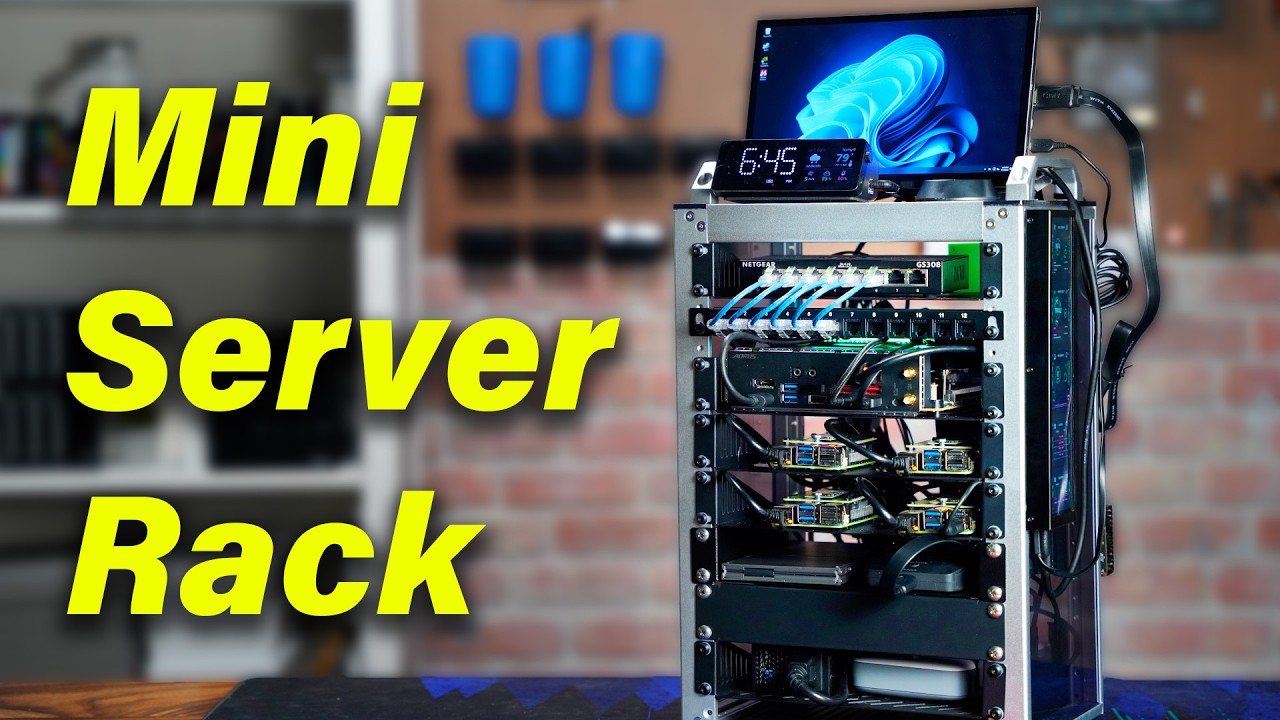
Jeff’s Video – https://www.youtube.com/watch?v=c8-cdA50bpU
Tim’s Ansible Video – https://www.youtube.com/watch?v=CbkEWcUZ7zM
Jeff’s Axe Effect – https://www.craftcomputing.com/product/axe-effect-temperature-sensor-beta-/1
Products:
Rackmate T1 – https://amzn.to/3WaZJh5
Rackmate T1 (Europe) – https://www.amazon.de/dp/B0CS6MHCY8
10″ Screen – https://amzn.to/4bCf3Yx
Vobot Dock – https://link.rdwl.me/66B7l
Sensor Panel – https://amzn.to/3XVqR54
Button – https://amzn.to/3xDD6sh
Netgear switch – https://amzn.to/45SCXhf
ITX Board – https://amzn.to/3xNreUu
Intel 13700k – https://amzn.to/3VYbs12
CPU Cooler – https://amzn.to/3RXHzNc
Power Block – https://amzn.to/3Li5B1P
ITX PSU – https://amzn.to/3LccMbI
Folding Keyboard – https://amzn.to/4bxF1ML
HDMI Splitter – https://amzn.to/3xQpiup
1TB SSD – https://amzn.to/4cRSYGp
——————————————————————————————-
🛒 Amazon Shop – https://www.amazon.com/shop/raidowl
👕 Merch – https://www.raidowlstore.com
🔥 Check out today’s best deals from Newegg: https://howl.me/clshD8fv8xj
——————————————————————————————-
Join the Discord: https://discord.gg/CUzhMSS7qd
Become a Channel Member!
https://www.youtube.com/channel/UC9evhW4JB_UdXSLeZGy8lGw/join
Support the channel on:
Patreon – https://www.patreon.com/RaidOwl
Discord – https://bit.ly/3J53xYs
Paypal – https://bit.ly/3Fcrs5V
My Hardware:
Intel 13900k – https://amzn.to/3Z6CGSY
Samsung 980 2TB – https://amzn.to/3myEa85
Logitech G513 – https://amzn.to/3sPS6yv
Logitech G703 – https://shop-links.co/cgVV8GQizYq
WD Ultrastar 12TB – https://amzn.to/3EvOPXc
My Studio Equipment:
Sony FX3 – https://shop-links.co/cgVV8HHF3mX / https://amzn.to/3qq4Jxl
Sony 24mm 1.4 GM – https://shop-links.co/cgVV8HuQfCc
Tascam DR-40x Audio Recorder – https://shop-links.co/cgVV8G3Xt0e
Rode NTG4+ Mic – https://amzn.to/3JuElLs
Atmos NinjaV – https://amzn.to/3Hi0ue1
Godox SL150 Light – https://amzn.to/3Es0Qg3
https://links.hostowl.net/
0:00 Intro
0:31 Rackmate T1 Mini Rack
1:32 Let’s check out the hardware
1:42 Screens!
4:06 Networking
4:43 Mini ITX PC
5:50 There’s a GPU?
6:51 Raspberry Pi 5s
7:37 I’m calling out Techno Tim
8:07 K3s/Docker/Ansible
9:28 Axe Effect temperature monitor
9:55 Why no PoE?
10:07 Peripherals
10:30 Powering everything
11:48 Overall thoughts
source
Technology
Spotify’s ‘AI Playlist’ is rolling out in Beta in the US & other regions

Generative AI, aka GenAI, has taken the world by storm. It’s not new to see the GenAI features these days on multiple apps, smartphones, PCs, and other tech products. Spotify is one such app that has recently announced a GenAI-powered feature called “AI playlists.” Today, Spotify announced it is expanding the AI Playlist in beta to Premium users in more countries.
Spotify’s AI Playlist is now available in the US as part of the Beta rollout
Initially, Spotify launched the AI Playlist feature back in April this year. Back then, it was exclusively available to Premium users from the UK and Australia. Now, the feature is available to Premium users in the U.S., Canada, Ireland, and New Zealand as part of the beta rollout. To catch you up, Spotify’s AI Playlist creates a customized playlist based on the given text prompt.
You can ask AI to curate a playlist according to your mood and vibe. For example, you can enter a prompt like “Give me some funky and upbeat songs.” That’s all you have to do. Then, Spotify uses the LLM technology to get the idea and scour through your app’s search history to create a playlist that matches your prompt.
This new feature can be your song-recommending friend when Spotify’s music feed doesn’t quite show what you might be looking for. It is worth noting that the generated playlist includes 30 songs which you can re-customize with additional prompts.
Here’s how you can access the feature on Spotify
If you are a Premium user and live in the said countries, the feature can be accessed on the Spotify app by tapping on the “+” button at the top right next to your Spotify library. Once you select the “AI Playlist” option, a drop-down menu will open the chat box. That’s where you can enter the text prompts. Not to forget, the feature also provides prompt suggestions.
Currently, the AI Playlist beta is only available on Spotify’s Android and iOS apps for now. That also means the feature is not available on the Spotify desktop app or web. However, we expect the audio streaming giant to bring it all devices down the line. In related news, Spotify has recently made some changes to the Family plan to prevent the “Kids” playlists from messing with parents’ algorithms and recommendations.

Servers computers
Rack 20U dan 30U
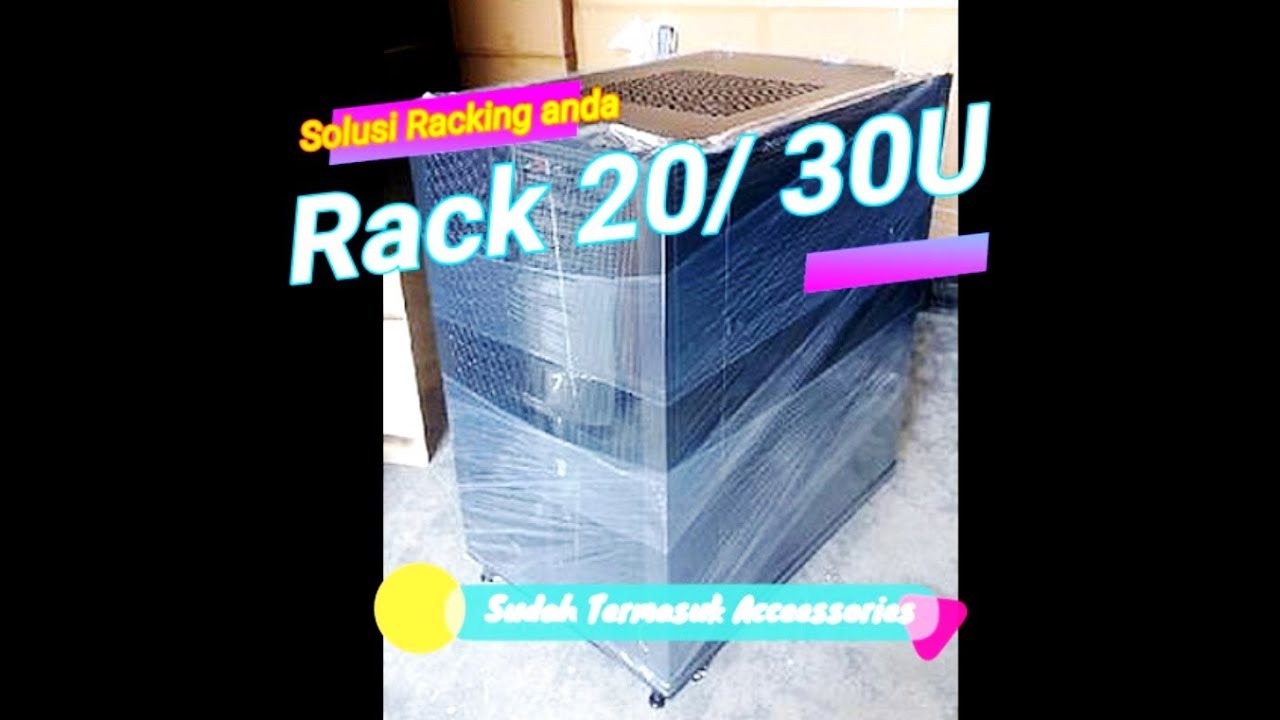
Closedrack 20U dan 30U W600 D900/1100mm adalah solusi untuk kebutuhan perangkat Rackmount anda.
Sebagai informasi :
1. 20/30U adalah tinggi rack, “U” adalah satuan tinggi perangkat yg di gunakan International dan jadi patokan penentuan kebutuhan rack. U=44mm
2. W600 adalah lebar rack yaitu 600mm/ 60cm dimana di dalam nya ada railing 19″(Inch) yg merupakan lebar perangkat International. Jika suatu perangkat di katakan “Rack Mount”, maka lebar perangkat HARUS 19″.
3. D900/ 1100mm adalah Depth/ kedalaman dari rack tsb dimana ini tidak ada standart baku, contoh ada perangkat yg depth nya hanya 300mm tapi untuk server biasa nya 700 depth nya.
Closedrack di gunakan terutama untuk mengamankan Perangkat Elektronik yg kita install selain agar tidak hilang, terutama agar settingan yg sudah di lakukan tidak di rubah2 olah tangan2 jahil.
Silakan feel free untuk diskusi kebutuhan rack anda.
WA: 0812 991 9892 (WILLIAM)
Pleease LIKE, SUBCRIBE, SHARE dan Comment untuk update produk2 lain nya. Many thanks
#Rack 20U dan 30U .
source
Technology
FTX advisor and Alameda CEO Caroline Ellison gets two years in prison
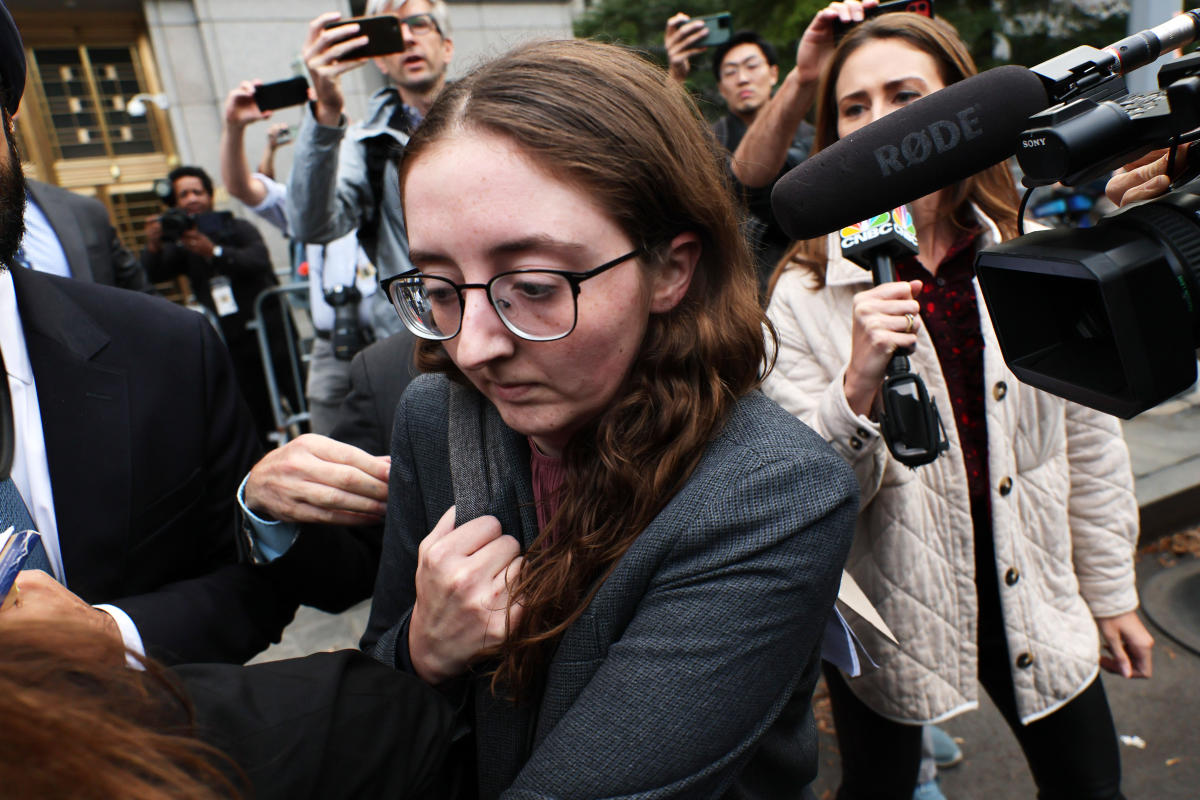
A US district court judge sentenced Caroline Ellison, the former advisor and ex-girlfriend to the convicted crypto fraudster and FTX founder Sam Bankman-Fried, to two years in prison.
reported Ellison’s sentence for her role in the $8 billion in fraud committed by the FTX crypto exchange that sent for 25 years back in March. Ellison will also have to serve three years of supervised release once she’s finished her prison sentence.
Ellison pled guilty at the end of 2022 to just as Bankman-Fried was being extradited to the US from the Bahamas. US Securities and Exchange Commission (SEC) Director of Enforcement Sanjay Wadhwa said following Ellison’s plea that she and Wang “were active participants in a scheme to conceal material information from FTX investors.”
Ellison was also the former chief executive officer of FTX’s sister company Alameda Research. Prosecutors said she diverted FTX customers’ funds onto Alameda’s books to hide risks from their clients. Ellison testified against Bankman-Fried, making her a key witness in his criminal fraud trial.
Prosecutors also got Bankman-Friend’s house arrest and bail revoked when a judge determined the FTX founder tried to hinder Ellison’s testimony last year. Bankman-Fried tried to message FTX’s general counsel on Signal and email in 2023 to influence Ellison’s testimony who was only identified as “Witness-1.”
Nine months later, Bankman-Fried showed that prosecutors said were an attempt to damage her reputation especially amongst prospective jurors. The judge agreed both instances merited Bankman-Fried’s arrest and jailing while he awaited trial. Bankman-Fried is currently serving his 25-year sentence in a federal prison in Brooklyn awaiting appeal for his conviction.
Ellison issued a statement before her sentence apologizing for her crimes to the people she and her former firm defrauded. Prosecutors did not issue a recommended sentence and characterized her cooperation with investigators as “exemplary” in a memo to the judge.
“Not a day goes by that I don’t think of the people I hurt,” Ellison said in court. “I am deeply ashamed of what I have done.”
Technology
AutoToS makes LLM planning fast, accurate and inexpensive

Join our daily and weekly newsletters for the latest updates and exclusive content on industry-leading AI coverage. Learn More
Large language models (LLMs) have shown promise in solving planning and reasoning tasks by searching through possible solutions. However, existing methods can be slow, computationally expensive and provide unreliable answers.
Researchers from Cornell University and IBM Research have introduced AutoToS, a new technique that combines the planning power of LLMs with the speed and accuracy of rule-based search algorithms. AutoToS eliminates the need for human intervention and significantly reduces the computational cost of solving planning problems. This makes it a promising technique for LLM applications that must reason over large solution spaces.
Thought of Search
There is a growing interest in using LLMs to handle planning problems, and researchers have developed several techniques for this purpose. The more successful techniques, such as Tree of Thoughts, use LLMs as a search algorithm that can validate solutions and propose corrections.
While these approaches have demonstrated impressive results, they face two main challenges. First, they require numerous calls to LLMs, which can be computationally expensive, especially when dealing with complex problems with thousands of possible solutions. Second, they do not guarantee that the LLM-based algorithm qualifies for “completeness” and “soundness.” Completeness ensures that if a solution exists, the algorithm will eventually find it, while soundness guarantees that any solution returned by the algorithm is valid.
Thought of Search (ToS) offers an alternative approach. ToS leverages LLMs to generate code for two key components of search algorithms: the successor function and the goal function. The successor function determines how the search algorithm explores different nodes in the search space, while the goal function checks whether the search algorithm has reached the desired state. These functions can then be used by any offline search algorithm to solve the problem. This approach is much more efficient than keeping the LLM in the loop during the search process.
“Historically, in the planning community, these search components were either manually coded for each new problem or produced automatically via translation from a description in a planning language such as PDDL, which in turn was either manually coded or learned from data,” Michael Katz, principal research staff member at IBM Research, told VentureBeat. “We proposed to use the large language models to generate the code for the search components from the textual description of the planning problem.”
The original ToS technique showed impressive progress in addressing the soundness and completeness requirements of search algorithms. However, it required a human expert to provide feedback on the generated code and help the model refine its output. This manual review was a bottleneck that reduced the speed of the algorithm.
Automating ToS

“In [ToS], we assumed a human expert in the loop, who could check the code and feedback the model on possible issues with the generated code, to produce a better version of the search components,” Katz said. “We felt that in order to automate the process of solving the planning problems provided in a natural language, the first step must be to take the human out of that loop.”
AutoToS automates the feedback and exception handling process using unit tests and debugging statements, combined with few-shot and chain-of-thought (CoT) prompting techniques.
AutoToS works in multiple steps. First, it provides the LLM with the problem description and prompts it to generate code for the successor and goal functions. Next, it runs unit tests on the goal function and provides feedback to the model if it fails. The model then uses this feedback to correct its code. Once the goal function passes the tests, the algorithm runs a limited breadth-first search to check if the functions are sound and complete. This process is repeated until the generated functions pass all the tests.
Finally, the validated functions are plugged into a classic search algorithm to perform the full search efficiently.
AutoToS in action
The researchers evaluated AutoToS on several planning and reasoning tasks, including BlocksWorld, Mini Crossword and 24 Game. The 24 Game is a mathematical puzzle where you are given four integers and must use basic arithmetic operations to create a formula that equates to 24. BlocksWorld is a classic AI planning domain where the goal is to rearrange blocks stacked in towers. Mini Crosswords is a simplified crossword puzzle with a 5×5 grid.
They tested various LLMs from different families, including GPT-4o, Llama 2 and DeepSeek Coder. They used both the largest and smallest models from each family to evaluate the impact of model size on performance.
Their findings showed that with AutoToS, all models were able to identify and correct errors in their code when given feedback. The larger models generally produced correct goal functions without feedback and required only a few iterations to refine the successor function. Interestingly, GPT-4o-mini performed surprisingly well in terms of accuracy despite its small size.
“With just a few calls to the language model, we demonstrate that we can obtain the search components without any direct human-in-the-loop feedback, ensuring soundness, completeness, accuracy and nearly 100% accuracy across all models and all domains,” the researchers write.
Compared to other LLM-based planning approaches, ToS drastically reduces the number of calls to the LLM. For example, for the 24 Game dataset, which contains 1,362 puzzles, the previous approach would call GPT-4 approximately 100,000 times. AutoToS, on the other hand, needed only 2.2 calls on average to generate sound search components.
“With these components, we can use the standard BFS algorithm to solve all the 1,362 games together in under 2 seconds and get 100% accuracy, neither of which is achievable by the previous approaches,” Katz said.
AutoToS for enterprise applications
AutoToS can have direct implications for enterprise applications that require planning-based solutions. It cuts the cost of using LLMs and reduces the reliance on manual labor, enabling experts to focus on high-level planning and goal specification.
“We hope that AutoToS can help with both the development and deployment of planning-based solutions,” Katz said. “It uses the language models where needed—to come up with verifiable search components, speeding up the development process and bypassing the unnecessary involvement of these models in the deployment, avoiding the many issues with deploying large language models.”
ToS and AutoToS are examples of neuro-symbolic AI, a hybrid approach that combines the strengths of deep learning and rule-based systems to tackle complex problems. Neuro-symbolic AI is gaining traction as a promising direction for addressing some of the limitations of current AI systems.
“I don’t think that there is any doubt about the role of hybrid systems in the future of AI,” Harsha Kokel, research scientist at IBM, told VentureBeat. “The current language models can be viewed as hybrid systems since they perform a search to obtain the next tokens.”
While ToS and AutoToS show great promise, there is still room for further exploration.
“It is exciting to see how the landscape of planning in natural language evolves and how LLMs improve the integration of planning tools in decision-making workflows, opening up opportunities for intelligent agents of the future,” Kokel and Katz said. “We are interested in general questions of how the world knowledge of LLMs can help improve planning and acting in real-world environments.”
Source link
-

 Womens Workouts1 day ago
Womens Workouts1 day ago3 Day Full Body Women’s Dumbbell Only Workout
-

 News6 days ago
News6 days agoYou’re a Hypocrite, And So Am I
-

 Sport5 days ago
Sport5 days agoJoshua vs Dubois: Chris Eubank Jr says ‘AJ’ could beat Tyson Fury and any other heavyweight in the world
-

 Technology7 days ago
Technology7 days agoWould-be reality TV contestants ‘not looking real’
-

 News2 days ago
News2 days agoOur millionaire neighbour blocks us from using public footpath & screams at us in street.. it’s like living in a WARZONE – WordupNews
-

 Science & Environment5 days ago
Science & Environment5 days ago‘Running of the bulls’ festival crowds move like charged particles
-

 Science & Environment6 days ago
Science & Environment6 days agoHow to unsnarl a tangle of threads, according to physics
-

 CryptoCurrency5 days ago
CryptoCurrency5 days agoEthereum is a 'contrarian bet' into 2025, says Bitwise exec
-

 Science & Environment6 days ago
Science & Environment6 days agoLiquid crystals could improve quantum communication devices
-

 CryptoCurrency5 days ago
CryptoCurrency5 days agoDZ Bank partners with Boerse Stuttgart for crypto trading
-

 CryptoCurrency5 days ago
CryptoCurrency5 days agoBitcoin bulls target $64K BTC price hurdle as US stocks eye new record
-

 Science & Environment6 days ago
Science & Environment6 days agoQuantum ‘supersolid’ matter stirred using magnets
-

 Science & Environment6 days ago
Science & Environment6 days agoMaxwell’s demon charges quantum batteries inside of a quantum computer
-

 Science & Environment6 days ago
Science & Environment6 days agoSunlight-trapping device can generate temperatures over 1000°C
-

 Science & Environment6 days ago
Science & Environment6 days agoHow to wrap your mind around the real multiverse
-

 CryptoCurrency5 days ago
CryptoCurrency5 days agoDorsey’s ‘marketplace of algorithms’ could fix social media… so why hasn’t it?
-

 Science & Environment6 days ago
Science & Environment6 days agoWhy this is a golden age for life to thrive across the universe
-

 Health & fitness7 days ago
Health & fitness7 days agoThe secret to a six pack – and how to keep your washboard abs in 2022
-

 Science & Environment6 days ago
Science & Environment6 days agoLaser helps turn an electron into a coil of mass and charge
-

 Science & Environment6 days ago
Science & Environment6 days agoITER: Is the world’s biggest fusion experiment dead after new delay to 2035?
-

 Science & Environment6 days ago
Science & Environment6 days agoNerve fibres in the brain could generate quantum entanglement
-

 CryptoCurrency5 days ago
CryptoCurrency5 days agoBitcoin miners steamrolled after electricity thefts, exchange ‘closure’ scam: Asia Express
-

 CryptoCurrency5 days ago
CryptoCurrency5 days agoCardano founder to meet Argentina president Javier Milei
-

 CryptoCurrency5 days ago
CryptoCurrency5 days agoLow users, sex predators kill Korean metaverses, 3AC sues Terra: Asia Express
-

 CryptoCurrency5 days ago
CryptoCurrency5 days agoSEC asks court for four months to produce documents for Coinbase
-

 CryptoCurrency5 days ago
CryptoCurrency5 days agoBlockdaemon mulls 2026 IPO: Report
-

 Science & Environment2 days ago
Science & Environment2 days agoMeet the world's first female male model | 7.30
-

 News5 days ago
News5 days agoIsrael strikes Lebanese targets as Hizbollah chief warns of ‘red lines’ crossed
-

 Sport5 days ago
Sport5 days agoUFC Edmonton fight card revealed, including Brandon Moreno vs. Amir Albazi headliner
-

 Science & Environment5 days ago
Science & Environment5 days agoHyperelastic gel is one of the stretchiest materials known to science
-

 Technology5 days ago
Technology5 days agoiPhone 15 Pro Max Camera Review: Depth and Reach
-

 Science & Environment6 days ago
Science & Environment6 days agoQuantum forces used to automatically assemble tiny device
-

 News5 days ago
News5 days agoBrian Tyree Henry on voicing young Megatron, his love for villain roles
-

 Science & Environment6 days ago
Science & Environment6 days agoTime travel sci-fi novel is a rip-roaringly good thought experiment
-

 Science & Environment6 days ago
Science & Environment6 days agoQuantum time travel: The experiment to ‘send a particle into the past’
-

 Science & Environment6 days ago
Science & Environment6 days agoPhysicists are grappling with their own reproducibility crisis
-

 Science & Environment6 days ago
Science & Environment6 days agoNuclear fusion experiment overcomes two key operating hurdles
-

 CryptoCurrency5 days ago
CryptoCurrency5 days ago2 auditors miss $27M Penpie flaw, Pythia’s ‘claim rewards’ bug: Crypto-Sec
-

 CryptoCurrency5 days ago
CryptoCurrency5 days agoJourneys: Robby Yung on Animoca’s Web3 investments, TON and the Mocaverse
-

 CryptoCurrency5 days ago
CryptoCurrency5 days ago$12.1M fraud suspect with ‘new face’ arrested, crypto scam boiler rooms busted: Asia Express
-

 CryptoCurrency5 days ago
CryptoCurrency5 days agoRedStone integrates first oracle price feeds on TON blockchain
-

 CryptoCurrency5 days ago
CryptoCurrency5 days agoVitalik tells Ethereum L2s ‘Stage 1 or GTFO’ — Who makes the cut?
-

 Womens Workouts4 days ago
Womens Workouts4 days agoBest Exercises if You Want to Build a Great Physique
-

 Womens Workouts4 days ago
Womens Workouts4 days agoEverything a Beginner Needs to Know About Squatting
-

 News5 days ago
News5 days agoChurch same-sex split affecting bishop appointments
-

 Politics5 days ago
Politics5 days agoLabour MP urges UK government to nationalise Grangemouth refinery
-

 Science & Environment5 days ago
Science & Environment5 days agoHow one theory ties together everything we know about the universe
-

 Science & Environment1 week ago
Science & Environment1 week agoCaroline Ellison aims to duck prison sentence for role in FTX collapse
-

 CryptoCurrency5 days ago
CryptoCurrency5 days agoHelp! My parents are addicted to Pi Network crypto tapper
-

 Science & Environment5 days ago
Science & Environment5 days agoFuture of fusion: How the UK’s JET reactor paved the way for ITER
-

 CryptoCurrency5 days ago
CryptoCurrency5 days agoSEC sues ‘fake’ crypto exchanges in first action on pig butchering scams
-

 CryptoCurrency5 days ago
CryptoCurrency5 days agoCertiK Ventures discloses $45M investment plan to boost Web3
-

 CryptoCurrency5 days ago
CryptoCurrency5 days agoVonMises bought 60 CryptoPunks in a month before the price spiked: NFT Collector
-

 CryptoCurrency5 days ago
CryptoCurrency5 days ago‘Silly’ to shade Ethereum, the ‘Microsoft of blockchains’ — Bitwise exec
-

 CryptoCurrency5 days ago
CryptoCurrency5 days ago‘No matter how bad it gets, there’s a lot going on with NFTs’: 24 Hours of Art, NFT Creator
-
Business5 days ago
Thames Water seeks extension on debt terms to avoid renationalisation
-
Business5 days ago
How Labour donor’s largesse tarnished government’s squeaky clean image
-

 News5 days ago
News5 days agoBrian Tyree Henry on voicing young Megatron, his love for villain roles
-

 CryptoCurrency5 days ago
CryptoCurrency5 days agoCoinbase’s cbBTC surges to third-largest wrapped BTC token in just one week
-

 News4 days ago
News4 days agoBangladesh Holds the World Accountable to Secure Climate Justice
-

 News2 days ago
News2 days agoFour dead & 18 injured in horror mass shooting with victims ‘caught in crossfire’ as cops hunt multiple gunmen
-

 Politics7 days ago
Politics7 days agoTrump says he will meet with Indian Prime Minister Narendra Modi next week
-

 Technology5 days ago
Technology5 days agoFivetran targets data security by adding Hybrid Deployment
-

 Money6 days ago
Money6 days agoWhat estate agents get up to in your home – and how they’re being caught
-

 Science & Environment6 days ago
Science & Environment6 days agoA new kind of experiment at the Large Hadron Collider could unravel quantum reality
-

 Fashion Models5 days ago
Fashion Models5 days agoMixte
-

 Science & Environment6 days ago
Science & Environment6 days agoHow Peter Higgs revealed the forces that hold the universe together
-

 News6 days ago
News6 days ago▶️ Media Bias: How They Spin Attack on Hezbollah and Ignore the Reality
-

 News6 days ago
News6 days agoRoad rage suspects in custody after gunshots, drivers ramming vehicles near Boise
-

 CryptoCurrency5 days ago
CryptoCurrency5 days agoCrypto scammers orchestrate massive hack on X but barely made $8K
-

 Science & Environment5 days ago
Science & Environment5 days agoUK spurns European invitation to join ITER nuclear fusion project
-

 Science & Environment5 days ago
Science & Environment5 days agoWhy we need to invoke philosophy to judge bizarre concepts in science
-

 Science & Environment5 days ago
Science & Environment5 days agoHow do you recycle a nuclear fusion reactor? We’re about to find out
-

 CryptoCurrency5 days ago
CryptoCurrency5 days agoElon Musk is worth 100K followers: Yat Siu, X Hall of Flame
-

 CryptoCurrency5 days ago
CryptoCurrency5 days agoBitcoin price hits $62.6K as Fed 'crisis' move sparks US stocks warning
-

 CryptoCurrency5 days ago
CryptoCurrency5 days agoCZ and Binance face new lawsuit, RFK Jr suspends campaign, and more: Hodler’s Digest Aug. 18 – 24
-

 CryptoCurrency5 days ago
CryptoCurrency5 days agoBeat crypto airdrop bots, Illuvium’s new features coming, PGA Tour Rise: Web3 Gamer
-

 CryptoCurrency5 days ago
CryptoCurrency5 days agoTelegram bot Banana Gun’s users drained of over $1.9M
-

 CryptoCurrency5 days ago
CryptoCurrency5 days agoEthereum falls to new 42-month low vs. Bitcoin — Bottom or more pain ahead?
-

 CryptoCurrency5 days ago
CryptoCurrency5 days agoETH falls 6% amid Trump assassination attempt, looming rate cuts, ‘FUD’ wave
-
Politics5 days ago
The Guardian view on 10 Downing Street: Labour risks losing the plot | Editorial
-

 Politics5 days ago
Politics5 days agoI’m in control, says Keir Starmer after Sue Gray pay leaks
-
Politics5 days ago
‘Appalling’ rows over Sue Gray must stop, senior ministers say | Sue Gray
-
Business5 days ago
UK hospitals with potentially dangerous concrete to be redeveloped
-
Business5 days ago
Axel Springer top team close to making eight times their money in KKR deal
-

 News5 days ago
News5 days ago“Beast Games” contestants sue MrBeast’s production company over “chronic mistreatment”
-

 News5 days ago
News5 days agoSean “Diddy” Combs denied bail again in federal sex trafficking case
-

 CryptoCurrency5 days ago
CryptoCurrency5 days agoBitcoin options markets reduce risk hedges — Are new range highs in sight?
-

 Money5 days ago
Money5 days agoBritain’s ultra-wealthy exit ahead of proposed non-dom tax changes
-

 Womens Workouts4 days ago
Womens Workouts4 days agoHow Heat Affects Your Body During Exercise
-

 Womens Workouts4 days ago
Womens Workouts4 days agoKeep Your Goals on Track This Season
-

 Womens Workouts4 days ago
Womens Workouts4 days agoWhich Squat Load Position is Right For You?
-

 News2 days ago
News2 days agoWhy Is Everyone Excited About These Smart Insoles?
-

 Womens Workouts1 day ago
Womens Workouts1 day ago3 Day Full Body Toning Workout for Women
-

 News5 days ago
News5 days agoPolice chief says Daniel Greenwood 'used rank to pursue junior officer'
-

 Science & Environment6 days ago
Science & Environment6 days agoElon Musk’s SpaceX contracted to destroy retired space station
-
Politics1 week ago
Starmer ally Hollie Ridley appointed as Labour general secretary | Labour
-

 Technology1 week ago
Technology1 week ago‘The dark web in your pocket’
-

 Business1 week ago
Business1 week agoGuardian in talks to sell world’s oldest Sunday paper
-
News5 days ago
Freed Between the Lines: Banned Books Week

You must be logged in to post a comment Login